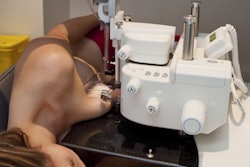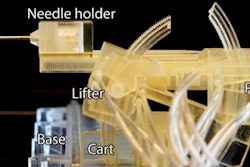The rate of follow-up biopsies after breast cancer is relatively low -- a fact that may help women feel more comfortable with choosing less-aggressive treatment, according to a study published online January 31 in JAMA Surgery.
Existing research can help physicians counsel women about breast cancer recurrence rates, but there aren't much data regarding how often a patient, after having had breast cancer, will require a biopsy, according to a team led by Dr. Henry Kuerer, PhD, from MD Anderson Cancer Center.
"Many [women] feel very anxious about the future need for biopsies and the potential of another diagnosis," Kuerer said in a statement released by the university. "Women will often choose a mastectomy rather than have the fear and stress associated with future biopsies or another cancer diagnosis."
To investigate the biopsy rate after breast cancer treatment, Kuerer and colleagues used data from two national sources: MarketScan, a database of patients with private insurance, ages 64 and younger, and the Surveillance, Epidemiology, and End Results (SEER)-Medicare database. They included 41,510 MarketScan breast cancer patients and 80,369 SEER-Medicare breast cancer patients (ages 65 and older). All of the women had stage I to stage III disease and were diagnosed between 2000 and 2011. The group used diagnosis and procedural codes to identify biopsy rates during follow-up.
In the MarketScan cohort, the five-year overall incidence of breast biopsy was 14.7% and the 10-year overall incidence was 23.4%, the researchers found. In the SEER-Medicare cohort, the five-year overall incidence of breast biopsy was 11.8% and the 10-year overall incidence was 14.9%.
Kuerer and colleagues noted that the five-year incidence of breast biopsy was higher in women treated with brachytherapy in both cohorts, at 16.7% in the MarketScan group and 15.1% in the SEER group, compared with patients who received whole-breast radiation. After a mastectomy in one breast, the estimated five-year breast biopsy rates for the other breast were 10.4% in the MarketScan cohort and 7.8% in the SEER cohort.
Among the patients who did have breast biopsy, 29.8% in the MarketScan group and 23.2% in the SEER group subsequently underwent cancer treatment, the researchers found.
"The important message is that the rate of biopsy for patients is relatively low and the overwhelming majority of the biopsy results will be benign and not require further treatment," Kuerer said.



















